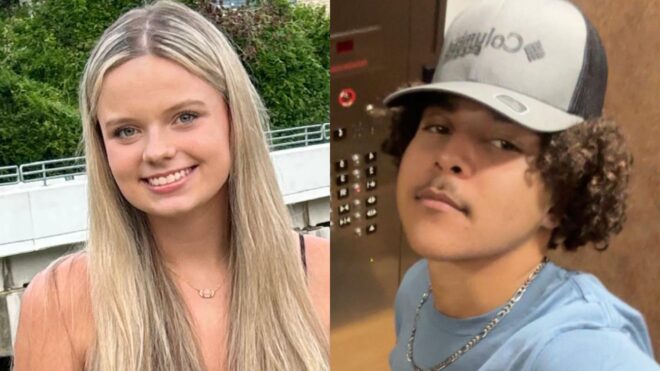
We call children little people and assume that applies to every aspect of their personhood. But in reality, children are only little in stature. They have very big and very real feelings, just like the adults in their lives. But they might not always have the language or emotional maturity to identify those feelings. One teacher in California has made it a priority to recognize the mental health needs of the students in her class and teach them how to express them in a healthy way.
Helping children learn to identify their emotions can also help them in learning how to manage them as they arise, which is not just important at school, but at home as well. Erin Castillo's strategy helps with this process. It's so brilliant it’s caught the attention of teachers and news networks around the world.
Castillo is a teacher and counselor.
Erin Castillo is an educator at John F. Kennedy High School in Fremont, California. She developed a mental health check-in chart for her students. Students write their names on Post-It notes and place them next to the feeling that best describes where they’re at mentally.
The categories are: “I’m Great. I’m okay. I’m meh. I’m struggling. I’m having a hard time and wouldn’t mind a check in. And I’m in a really dark place.”
The idea has spread worldwide.
Castillo, who shared the chart on her Instagram page, told Good Morning America that she was not expecting this reaction. “I never expected it to get beyond my following,” she said.
“To see this being used in multiple countries around the world, having [teachers] reach out from New Zealand and Africa … to hear actual stories of people helping their students, I’m really overwhelmed with joy."
Students in the last two categories are urged to speak with Castillo or a school psychologist.
Castillo works as both an English teacher and peer counseling teacher. A friend of hers launched a digital mental health check for teachers on Facebook. The idea caused Castillo to create something similar in her classroom. Students actually write their names on the back of the Post-It notes so they can maintain their privacy. If a student places their Post-It in the last two categories, Castillo checks in with them and they have a follow-up conversation with a counselor or school psychologist.
In the five years she’s been a teacher, Castillo has seen students struggle with “self-confidence, self-doubt, image, had suicidal thoughts, attempted suicide.” The challenges her students face inspired her to make “checking in” a theme in all of her classrooms.
Dr. Stephanie Samar, a clinical psychologist and certified school psychologist, said that the chart helps destigmatize the need for help.
“It gives the checks and balances that everyone isn't fine all the time — the way that social media and YouTube and all these platforms make it seem,” Samar said. “Seeing their classmates having good days and bad days really taps into what reality is."
The chart removes barriers so children can get the help they need.
Samar said children often struggle to ask for help. But the chart helps remove that burden for them, and allows the trained professionals in their school to step in and intervene with assistance or a listening ear.
Castillo said the chart has helped students ask for help in other ways as well. "I'll have a student that will be struggling with something I'm teaching and they'll put a Post-It up instead of raising their hand," Castillo said.
Castillo has since developed other resources for teachers.
Teacher Kyler Olson recreated the chart for her fourth graders. Olson said the chart has helped identify which students have the greatest emotional needs. For other teachers hoping to create a similar poster, Castillo, with the help of a counselor and a school psychologist, developed a downloadable worksheet with talking points.
She encourages educators to speak to students about the purpose of the chart before hanging it up.
"If it can help one student, then it'd be better than where we're at now," Castillo said. "I hope it gets to a place where we can talk about our struggles openly and our mental health. This looks like a step in the right direction."




